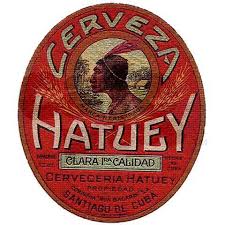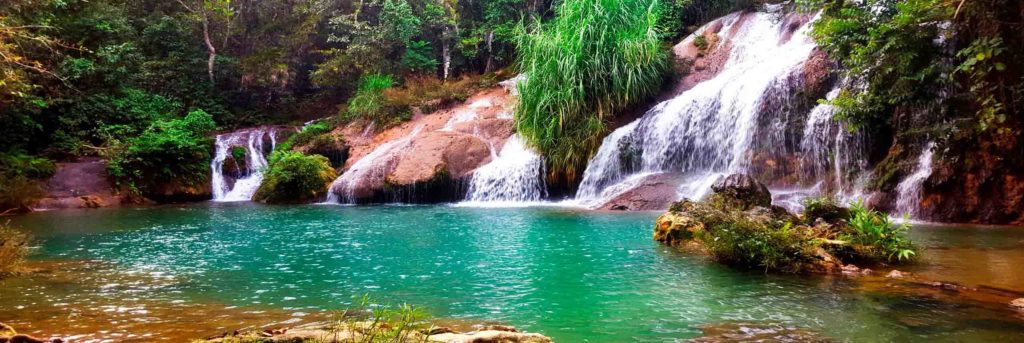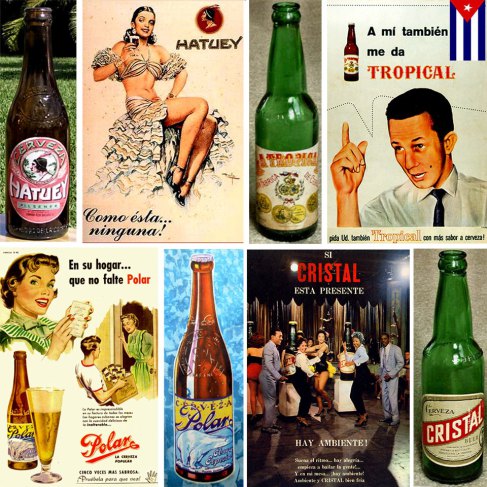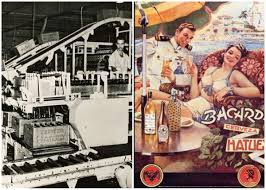THE FAMOUS CUBAN BEERS, “CRISTAL”, “HATUEY” AND “POLAR”. ITS HISTORY. PHOTOS/ VIDEOS.
The history of beers on the Cuban island begins to be imported by the Oriente province from Jamaica, in the form of smuggling, but it was not until in 1762 when the British took over Havana this would be legally imported. With the establishment of free trade, it would enter in large quantities.
About 130 brands, almost all English, were offered in taverns, cafes, wineries, and even in drugstores were among the beers in greatest demand, along with the “Cabeza de Perro”, also English. Towards 1850, the brand “Tennet Lager” had such a stronghold among consumers, that many Cubans call the sparkling liquid “laguer”.
Cuban beer was born in 1841 when Juan Manuel Asbert and Calixto García began to produce it in a factory on Calle San Rafael on the corner of Águila, but the attempt was a failure and from that moment the creoles were content to bottle the refreshing liquid that It came in barrels from the outside.
“LA TROPICAL” BEER BEGINS
They were doing this until 1883 when a factory was installed in the Matanzas city of Cárdenas to produce it. Thus emerged in Puentes Grandes, “La Tropical”, the first Cuban beer, with a low-quality product. It wouldn’t take long to get better when the specially hired French and German brewmasters ended up giving the beer the needed “twist”.
 VIDEOS- ADV. “POLAR” BEER IN CUBA
VIDEOS- ADV. “POLAR” BEER IN CUBA
In 1888 the so-called “New Ice Factory” was founded in Havana, linked shortly after to the beer factory in Puentes Grandes. There, “La Tropical” began to be made, under the ownership of Ramón Herrera Sancibían, Julio Blanco Herrera’s great-grandfather, who with his determination later managed to produce fifty-eight percent of what was produced annually in the country during the 1950s.
At the beginning, the brands in the market were the light beer “La Tropical”, the Tropical Dark “Excelsior”, the light beer “Cristal Palatino”, the dark Munich type beer “Tivoli” and the “Maltina Tivoli”. The exquisiteness of the brand transcended the coasts of the island to win prizes in Europe and the United States, the most significant being the Grand Prix at the International Exhibitions in London, in 1896, and Brussels in 1897; Diploma and Grand Prize at the International Exhibition of Progress, Paris, 1912; Gold Medal in the Exhibition of Agriculture and Industries of Havana, in 1909 and 1911; Bronze medal at the St. Louis Exposition, 1904, and his medals were displayed on the old label.
On land attached to the factory, Julio Blanco Herrera Sr. built the “La Tropical” stadium in 1929, today Pedro Marrero. This field served as the venue for the Second Central American and Caribbean Games, held in 1940.
THE HATUEY AND THE POLAR BEGIN IN CUBA
There were other very popular ones, like “Hatuey” and “Polar”. The first had a Cuban aborigine on its label, and the second a white bear. They promoted themselves like this: “The beer of the people and the people are never wrong.” For its exquisite flavor, its magnificent digestive conditions, and its invigorating results.
The other brand stated: “Ask for Hatuey. The great beer of Cuba ”, while the Cristal advertising insisted:“ How it animates! How happy! How stimulating! An extraordinary beer ”. It was all a matter of preference. There were imported beers, but they were not very popular, despite the fact that some brands of North American origin were presented in cans; a whole novelty at the time.
Before 1919, the “Santiago Brewing Company” was founded by Mr. Eduardo Chibas. During this year, under the direction of Mr. Enrique Schueg and Chassin, the facilities were acquired by the “Compañía Ron Bacardí SA”. The “Hatuey” brewery, located in the San Pedrito neighborhood of Santiago de Cuba, was bought with the sole purpose of building a new Bacardi distillery. The new distillery was inaugurated on February 4, 1922.
In its first 21 years, production and sales at the San Pedrito brewery in Santiago de Cuba increased five times. In order to meet Cuba’s growing thirst for “Hatuey” beer, the Modelo Brewery was created in 1947. This brewery was built in 1947 ten miles from Havana in “El Cotorro”. Being true to its name, it was indeed a model brewery.
The quality of Cuban beer was such that foreign counterparts were unable to penetrate the domestic market. Nobody could compete in price and quality of Cuban beers despite the fact that some foreign firms tried.
By 1958, Cuba had five breweries that produced about 30 million liters per year for a population of approximately 6 million inhabitants. If the low consumption of the product by women and minors is taken into account, the high per capita consumption of the product among drinkers can be inferred. The Cuban always has had a predilection for this drink.
The greatest consumption of beer took place in bars and canteens and some preferred to do it in the “bodega” on the corner. There, in a “family” environment, they talked with the clerk while savoring a foamy beer, a glass of “laguer” with a “saladito” of ham and cheese or with some olives, while the bolero of the moment sounded on the vitrola. That was Cuba Chaguito !.
LAS FAMOSAS CERVEZAS CUBANAS, “CRISTAL”, “HATUEY” Y “POLAR”. HISTORIA DE LA INDUSTRIA. VIDEOS.
La historia de las cervezas en la isla cubana comienza esta a importarse por la provincia de Oriente proveniente de Jamaica, en forma de contrabando, pero no fue hasta que en 1762 con la toma de los Ingleses a la Habana esta se importaria en forma legal. Con la instauración del libre comercio entraría en grandes cantidades.
Unas 130 marcas, casi todas inglesas, se ofertaban en tabernas, cafés, bodegas e incluso en boticas eran de las cervezas de mayor demanda, junto con la “Cabeza de Perro”, también inglesa. Hacia 1850, tal arraigo tuvo entre los consumidores la marca “Tennet Lager”, que son muchos los cubanos que llaman “laguer” al espumoso líquido.
La cerveza cubana nace en 1841, cuando Juan Manuel Asbert y Calixto García empezaron a producirla en una fábrica en la calle San Rafael esquina a Águila, pero el intento fue un fracaso y a partir de ese momento los criollos se contentaron con embotellar el refrescante líquido que llegaba en barriles desde el exterior.
COMIENZA LA CERVEZA “LA TROPICAL”
Así lo estuvieron haciendo hasta 1883 que se instaló en la ciudad matancera de Cárdenas una fábrica para producirla. Surgía así en Puentes Grandes, “La Tropical”, primera cerveza cubana, con un producto de baja calidad. No demoraría en mejorar cuando maestros cerveceros franceses y alemanes, contratados especialmente, terminaron dándole a la cerveza el “toque” necesario.
 VIDEOS – ANUNCIO DE “POLAR” EN CUBA
VIDEOS – ANUNCIO DE “POLAR” EN CUBA
En 1888 se fundó en La Habana la llamada “Nueva Fábrica de Hielo”, articulada poco después a la fábrica de cerveza en Puentes Grandes. Allí comenzó a elaborarse “La Tropical”, bajo propiedad de Ramón Herrera Sancibrían, bisabuelo de Julio Blanco Herrera, quien con su tesón logra posteriormente producir el cincuenta y ocho por ciento de la que se elaboraba anualmente en el país durante los años 50.
En sus inicios, las marcas en el mercado eran la cerveza clara “La Tropical”, la Tropical Oscura “Excelsior”, la cerveza clara “Cristal Palatino”, cerveza tipo Munich oscura “Tivoli” y la “Maltina Tivoli”. La exquisitez de la marca transcendió las costas de la isla para ganar premios en Europa y Estados Unidos, los más significativos fueron los Grandes Premios en las Exposiciones Internacionales de Londres, en 1896, y Bruselas en 1897; Diploma y Gran Premio en la Exposición Internacional del Progreso, París, 1912; Medalla de Oro en la Exposición de Agricultura e Industrias de La Habana, en 1909 y 1911; Medalla de Bronce en la Exposición de San Luis, 1904, y sus medallas se exhibieron en la antigua etiqueta.
 VIDEOS – ANUNCIOS DE “LA POLAR” EN CUBA
VIDEOS – ANUNCIOS DE “LA POLAR” EN CUBA
En terrenos anexos a la fábrica, Julio Blanco Herrera padre construyó en 1929 el estadio “La Tropical”, hoy Pedro Marrero. Este campo, sirvió de sede a los Segundos Juegos Centroamericanos y del Caribe, celebrados en 1940.
COMIENZAN LA HATUEY Y LA POLAR EN CUBA
Había otras muy populares, como “Hatuey” y “Polar”. La primera traía un aborigen cubano en su etiqueta, y la segunda un oso blanco. Se promocionaban así: “La cerveza del pueblo y el pueblo nunca se equivoca”. Por su sabor exquisito, sus magníficas condiciones digestivas y sus resultados tonificantes.
La otra marca afirmaba: “Pida Hatuey. La gran cerveza de Cuba”, mientras que la publicidad Cristal insistía: “¡Cómo anima! ¡Cómo alegra! ¡Cómo estimula! Una cerveza extraordinaria”. Todo era cuestión de preferencia. Había cervezas importadas, pero no tuvieron demasiada aceptación, pese a que algunas marcas de procedencia norteamericana se presentaban en latas; toda una novedad en la época.
Antes de 1919, el “Santiago Brewing Company” fue fundada por el Sr. Eduardo Chibas. Durante este año, bajo la dirección de Don Enrique Schueg y Chassin, las instalaciones fueron adquiridas por la “Compañía Ron Bacardí SA”. La fábrica de cerveza “Hatuey”, situada en el barrio San Pedrito de Santiago de Cuba, fue comprada con el único propósito de construir una nueva destilería Bacardí. La nueva destilería fue inaugurada el 4 de febrero de 1922.
En sus primeros 21 años, la producción y las ventas en la fábrica de cerveza San Pedrito en Santiago de Cuba aumentó cinco veces. A fin de atender la creciente sed de Cuba por la Cerveza “Hatuey”, la Cervecería Modelo fue creada en 1947. Esta cervecería se construyó en 1947 a diez millas de La Habana en “El Cotorro”. Siendo fiel a su nombre, era de hecho una cervecería modelo.
La calidad de la cerveza cubana fue tal que las similares extranjeras no lograban penetrar el mercado interno. Nadie podía competir en precio y calidad de las cervezas cubanas a pesar de que algunas firmas foráneas lo intentaban.
Por el año 1958, Cuba poseía cinco fábricas de cerveza que producían cerca de 30 millones de litros anuales para una población aproximada de 6 millones de habitantes. Si se tiene en cuenta el reducido consumo que del producto hacían las mujeres y los menores de edad, se puede inferir el alto consumo per cápita del producto entre los bebedores. El cubano de siempre ha sentido predilección por esta bebida.
El mayor consumo de cerveza tenía lugar en bares y cantinas y algunos preferían hacerlo en la “bodega” de la esquina. Allí, en un ambiente “familiar”, conversaban con el dependiente saboreando una cerveza espumosa, un vaso de ”laguer” con un “saladito” de jamón y queso o con algunas aceitunas, mientras en la vitrola sonaba el bolero del momento. Eso era Cuba Chaguito!.
Agencies/ MemoriasCubanas/ Derubín Jacomé/ Extractos/ Excerpts/ Internet Photos/ YouTube/ Arnoldo Varona/ www.TheCubanHistory.com
THE CUBAN HISTORY, HOLLYWOOD.









